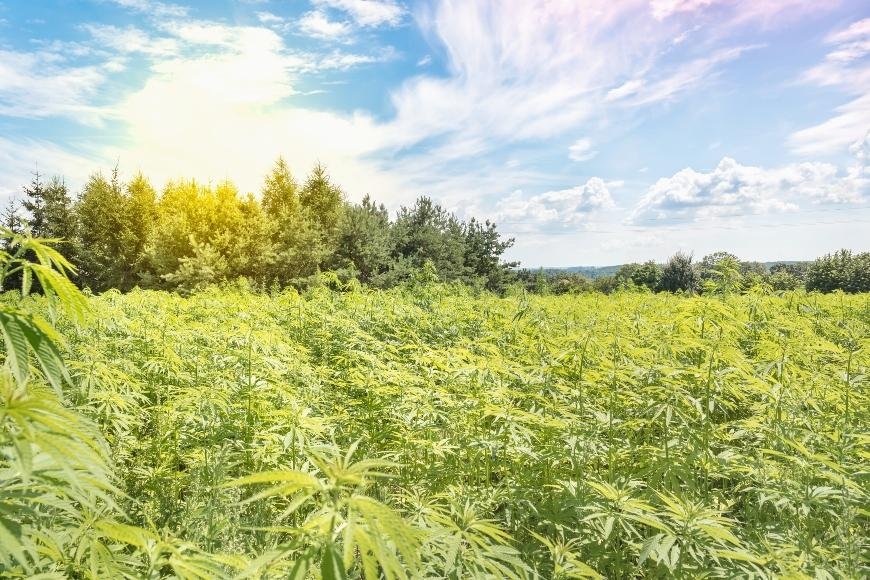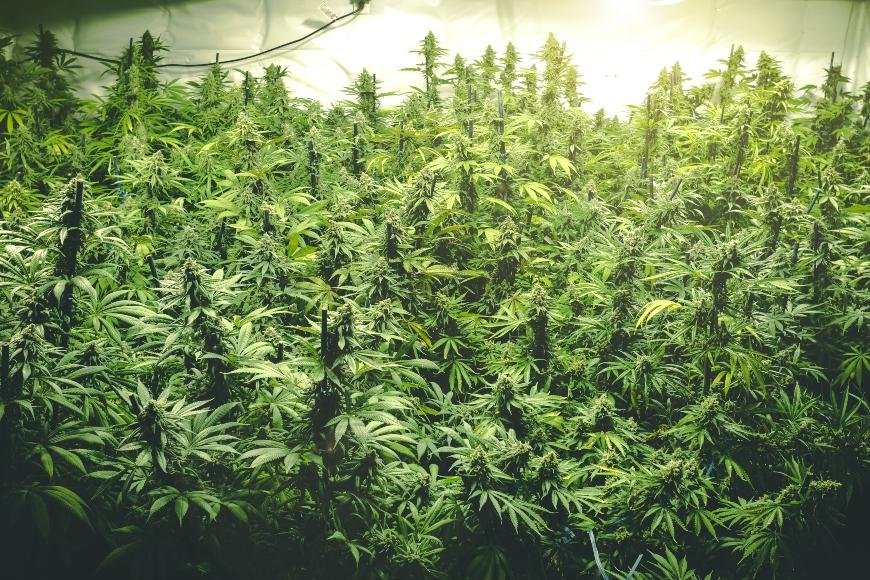The Best Ways to Grow Massive Weed Plants
Discover the best ways to grow massive weed plants with our expert tips on strain selection, environmental conditions, nutrients, training techniques, and more!

Discovering the best ways to grow massive weed plants can be a rewarding and exciting journey for any recreational cultivator. With numerous factors playing crucial roles in achieving optimal growth, this guide will delve into essential aspects of cannabis cultivation.
We'll explore selecting suitable strains that thrive under specific conditions, ensuring your plants have the ideal environment to flourish. Proper nutrient management is key to supporting vigorous vegetative growth, while training techniques such as bamboo stakes and pruning methods encourage larger yields.
Pest prevention and control are vital in maintaining healthy plants throughout their lifecycle. Additionally, we'll discuss soil quality and its impact on plant development during the vegetative stage. Finally, harvesting and curing techniques will ensure you enjoy top-quality buds from your massive weed plants.
By following these expert tips on the best ways to grow massive weed plants, you're sure to achieve impressive results in both size and potency.
Table of Contents:
- Selecting Suitable Strains
- Environmental Conditions
- Nutrient Management
- Training Techniques
- Pest Prevention & Control
- Soil Quality
- Harvesting & Curing
- Conclusion
Selecting Suitable Strains
Choosing the right cannabis strain is a crucial first step in growing massive weed plants. The ideal strains for cultivating large trees are those that exhibit vigorous growth and ample branching, allowing them to reach impressive heights and produce abundant yields. Some popular options include:
- Strawberry Cough
- Super Silver Haze
- Blue Dream
- Gorilla Glue #4
- Purple Haze
When selecting a strain, consider factors such as growth patterns, flowering time, yield potential, and resistance to pests or diseases. Research each strain's specific requirements regarding lighting, temperature, humidity levels, and nutrient needs.
Growth Patterns & Genetics
Cannabis strains can be divided into two main categories: Indica dominant (shorter plants with broader leaves) and Sativa dominant (taller plants with narrower leaves). For growers seeking substantial tree-like structures, pursuing Sativa-dominant hybrids may prove more fruitful due to their natural tendency towards height.
Landrace Strains
Landrace strains, which are indigenous to specific regions, can also be a great option for growing massive weed plants. These strains have evolved over time in their native environments and often exhibit exceptional growth characteristics.
When selecting strains, take into account the climate and environment in which your plants will be cultivated to guarantee they flourish. With this knowledge, you can ensure that the strain you choose will thrive in its new home. Now let's move on to discussing how environmental conditions play a role in successful cannabis cultivation.

Environmental Conditions
To grow massive weed plants, it's crucial to provide them with optimal environmental conditions. This includes proper lighting, temperature, humidity, and air circulation. By closely monitoring these factors and making necessary adjustments throughout the growth cycle, you can ensure your cannabis trees thrive.
Lighting
Light is essential for photosynthesis, which drives plant growth. Cannabis plants necessitate at least 18 hours of illumination per day while in the vegetative phase and 12 hrs during blooming. High-intensity discharge (HID) lights or LED grow lights are popular choices among growers due to their efficiency in providing adequate light coverage.
Temperature & Humidity
For optimal growth, cannabis plants should be kept at temperatures between 70-85°F (21-29°C) during the vegetative stage and slightly cooler around 65-80°F (18-26°C) while flowering. Maintaining proper humidity levels is also important; aim for 40-60% relative humidity in the vegetative phase and decrease it to around 40% as flowers develop.
Air Circulation & Ventilation
- Air Circulation: Good air circulation inside your grow tent helps prevent mold formation while promoting stronger stems by gently swaying your cannabis trees back-and-forth like they would experience outdoors.
- Ventilation: Proper ventilation ensures that fresh CO2-rich air enters your growing space while stale oxygen-depleted air exits - this exchange promotes healthy respiration and growth.
By providing your cannabis plants with the ideal environmental conditions, you'll be well on your way to growing massive weed trees that produce impressive yields.
In order to ensure healthy and massive weed plants, it is essential to understand the environmental conditions that are needed for them. By managing nutrient levels properly, we can further optimize growth and maximize yields.
Nutrient Management
Proper nutrient management is essential for growing massive weed plants. Providing your cannabis trees with the right nutrients, in the correct amounts and at appropriate times, will ensure they receive adequate nourishment throughout their lifecycle. This section will cover key aspects of nutrient selection, feeding schedules, and pH balance.
Selecting Nutrients
There are numerous nutrient products available specifically designed for cannabis cultivation. Macronutrients (N, P, K) and micronutrients (Ca, Mg) should be considered when selecting nutrient products for cannabis cultivation. It's crucial to choose high-quality nutrients that cater to the specific needs of your chosen strain during its various growth stages: vegetative and flowering.
Feeding Schedules & Ratios
- Veg stage: During this phase of growth, provide higher levels of nitrogen to promote foliage development while maintaining moderate levels of phosphorus and potassium.
- Bloom stage: As plants transition into flowering mode (typically around week six or seven), gradually increase phosphorus levels while decreasing nitrogen inputs. This encourages bud formation without compromising overall plant health.
pH Balance & Monitoring
Maintaining proper pH balance is vital for optimal nutrient absorption by your cannabis plants' roots. A slightly acidic environment (between 6-7 pH) is ideal for most strains; however, some may require more specific ranges depending on their genetics. Invest in a reliable pH meter to regularly monitor and adjust your nutrient solution as needed.
Adequate nutrient provision is a critical factor for successful weed cultivation, as supplying the right amounts of nutrients can help your plants reach their fullest potential. Moving on to training techniques, there are a variety of methods that you can use to maximize yield and quality from your cannabis crop.
Training Techniques
One of the most effective ways to grow massive weed plants is by employing various training techniques. These methods help shape your cannabis trees, promote lateral growth, and maximize light penetration for optimal yield. In this section, we will discuss three popular training techniques: topping, pruning, and trellising.
Topping
Topping involves cutting off the main stem's tip to encourage branching out into multiple stems. This technique results in a bushier plant with more bud sites exposed to light, leading to increased yields. To top your cannabis tree effectively:
- Wait until the plant has at least four nodes before topping.
- Cut just above the node where you want new branches to form.
- Avoid topping during flowering as it can stress the plant and reduce yields.
Pruning
Pruning, or selectively removing parts of a plant that are unnecessary or detrimental (like dead leaves), helps direct energy towards productive growth areas like buds and flowers. Prune carefully throughout vegetative growth stages while avoiding excessive pruning during flowering stages when plants need all their energy for bud production.
Trellising
Trellising, a method involving horizontal netting or screens used as support structures for cannabis plants' sprawling branches, can increase light exposure across foliage canopy significantly improving yields. To trellis your cannabis trees:
- Install a sturdy support structure at the desired height.
- Weave branches through the netting as they grow, spreading them out evenly.
Training techniques are essential for achieving the highest yield and quality of weed plants. Pest prevention and control is a crucial part of this process, as pests can cause significant damage to your crop.

Pest Prevention & Control
Protecting your cannabis plants from pests is crucial for maintaining their health and vitality. Implementing effective pest prevention and control measures can significantly reduce the risk of infestations, ensuring that your plants remain robust and high-yielding. Here are some essential tips to safeguard your weed plants:
Maintain a Clean Growing Environment
Keeping your grow area clean is vital in preventing pests from invading your cannabis plants. Regularly remove any dead leaves or debris, as these can attract insects and harbor diseases. Sanitizing all equipment, receptacles and surfaces should be done regularly to stop the spread of germs.
Monitor Your Plants Closely
Routinely inspect your plants to help you detect early signs of pest activity before it becomes a significant issue. Look for symptoms such as yellowing leaves, holes in foliage, or sticky residue on plant surfaces - these could indicate an infestation.
Introduce Beneficial Insects
Beneficial insects, like ladybugs or predatory mites, can be introduced into the growing environment to naturally control harmful pests without using chemical pesticides.
Employ Organic Pest Control Methods
- Diatomaceous Earth: This natural powder effectively kills various types of insects by damaging their exoskeletons when they come into contact with it.
- Natural Pesticides: Opt for organic options like neem oil or insecticidal soap sprays that are safe for use on cannabis plants while still being effective against common pests.
By following these pest prevention and control tips, you can ensure the health and vitality of your cannabis plants while maximizing their yield potential.
Pest prevention and control is an essential part of successful weed plant growth, as pests can cause serious damage to the plants. To ensure healthy and massive plants, it's important to pay attention to soil quality as well.
Soil Quality
When it comes to growing massive weed plants, soil quality plays a crucial role in ensuring robust growth and maximizing yields. A well-balanced and nutrient-rich soil provides the necessary foundation for your cannabis trees to thrive. In this part, we'll go over the key components of great-quality soil and how you can upgrade your existing dirt conditions.
- Organic Matter: Incorporating organic matter like compost or aged manure into your soil will not only provide essential nutrients but also improve its structure, drainage, and water retention capabilities.
- pH Balance: Cannabis plants prefer slightly acidic soils with a pH range between 6.0-7.0. Regularly test your soil's pH levels using a soil pH meter, adjusting as needed with lime (to raise) or sulfur (to lower).
- Aeration & Drainage: Proper aeration allows roots to access oxygen while adequate drainage prevents root rot caused by excess moisture in the ground. To achieve these goals, mix perlite or vermiculite into your garden beds.
In addition to improving native soils, consider using pre-made potting mixes specifically designed for cannabis cultivation such as FoxFarm Ocean Forest Potting Soil. These blends contain all the necessary ingredients to support vigorous growth and bountiful yields. Remember, investing in high-quality soil is a vital step towards achieving your goal of growing massive weed plants.
The fertility of the earth is essential for the flourishing development of cannabis plants. With proper harvesting and curing techniques, you can ensure that your weed plants reach their full potential.
Harvesting & Curing
When it comes to reaping the rewards of your massive weed plants, proper harvesting and curing techniques are essential for preserving potency, flavor, and aroma. To ensure you're getting the most out of your cannabis trees, follow these steps:
- Determine the right time to harvest: Pay close attention to the trichomes on your buds. When they turn from clear to milky white or amber in color, it's time to harvest. You can use a magnifying glass or jeweler's loupe for a closer inspection.
- Cut and trim: Cut branches off your plant and carefully remove large fan leaves using sharp scissors or pruning shears. This will make trimming easier later on.
- Dry your buds: Hang trimmed branches upside down in a dark room with good air circulation at around 60% humidity and temperatures between 65-75°F (18-24°C). Drying should take about one week but may vary depending on environmental conditions. A slow drying process is crucial for maintaining quality.
- Cure properly: Once dried, place buds into sealable jars like mason jars filling them about two-thirds full without compacting them too tightly. Open jars daily during the first week allowing fresh air exchange while keeping an eye out for mold growth. After that initial period reduce opening frequency gradually until reaching once every few weeks after which you can store long-term at cool temperature away from light exposure.
Conclusion
From selecting the right strains and managing environmental conditions to training techniques and pest prevention, each step plays an important role in ensuring your plants thrive.
One key factor to consider is the vegetative stage, which is when your plants grow stems, leaves, and branches. During this stage, it's important to provide your plants with the right amount of light, water, and nutrients to encourage healthy vegetative growth. You may also want to consider using a grow tent to control the environment and promote optimal growth.
Another important aspect of growing massive weed plants is training your plants to grow in a way that maximizes their yield potential. This can involve using bamboo stakes or other supports to help your plants grow tall and strong, as well as pruning techniques to encourage bushier growth.
When it comes time to harvest your plants, it's important to do so at the right time to ensure maximum potency and flavor. Proper curing techniques can also help to enhance the quality of your buds and preserve their freshness.


































































































































